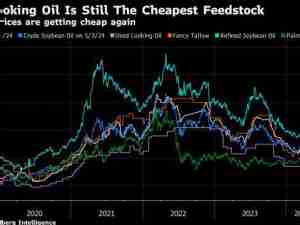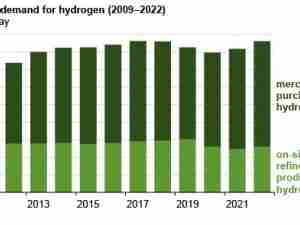In 2019, proved U.S. reserves of crude oil and lease condensate increased by 0.1%, and proved natural gas reserves declined by 1.9%, according to the report Proved Reserves of Crude Oil and Natural Gas in the United States, Year-End 2019 report, released today by the U.S. Energy Information Administration. Proved reserves of oil and natural gas rose annually in the United States by at least 9% in the previous two years (2017–2018), a trend interrupted by relatively low oil and natural gas prices.
In 2019, proved reserves of natural gas declined for the first time since 2015, yet 2019 levels were second only to the U.S. record set in 2018.
Proved reserves are operator estimates of the volumes of oil and natural gas that geologic and engineering data demonstrate with reasonable certainty are economically viable to recover in future years.
|
Crude oil billion barrels |
Crude oil and lease condensate billion barrels |
Natural gas trillion cubic feet |
2018 U.S. proved reserves |
43.8 |
47.1 |
504.5 |
Net change to U.S. proved reserves |
+0.4 |
+0.1 |
-9.6 |
2019 U.S. proved reserves |
44.2 |
47.1 |
494.9 |
Percentage change |
+0.8% |
+0.1% |
-1.9% |
In 2019, Alaska operators had a net increase of 259 million barrels in proved reserves of crude oil and lease condensate, the largest annual net increase in any state. New Mexico had the second-largest net increase (226 million barrels) and Texas had the third-largest net increase (179 million barrels) on an annual basis. The largest increases in crude oil and lease condensate reserves in New Mexico and Texas resulted from development activity in the Permian Basin. In 2019, the largest annual net decrease in proved reserves of crude oil and lease condensate in the United States was in Colorado (-154 million barrels). Oklahoma had the second-largest net decrease (-142 million barrels), and Utah had the third-largest net decrease (-134 million barrels) on an annual basis.
The annual average spot price for natural gas at the U.S. benchmark Henry Hub in Louisiana decreased by 21% from $3.35 per million British thermal units (MMBtu) in 2018 to $2.63 per MMBtu in 2019. The largest 2019 net decrease on an annual basis in proved reserves of natural gas in the United States was in Texas (-12 trillion cubic feet). The price drop at Henry Hub resulted in large reductions in proved natural gas reserves in the large shale gas plays of Texas—Eagle Ford, Barnett, and Bossier.








